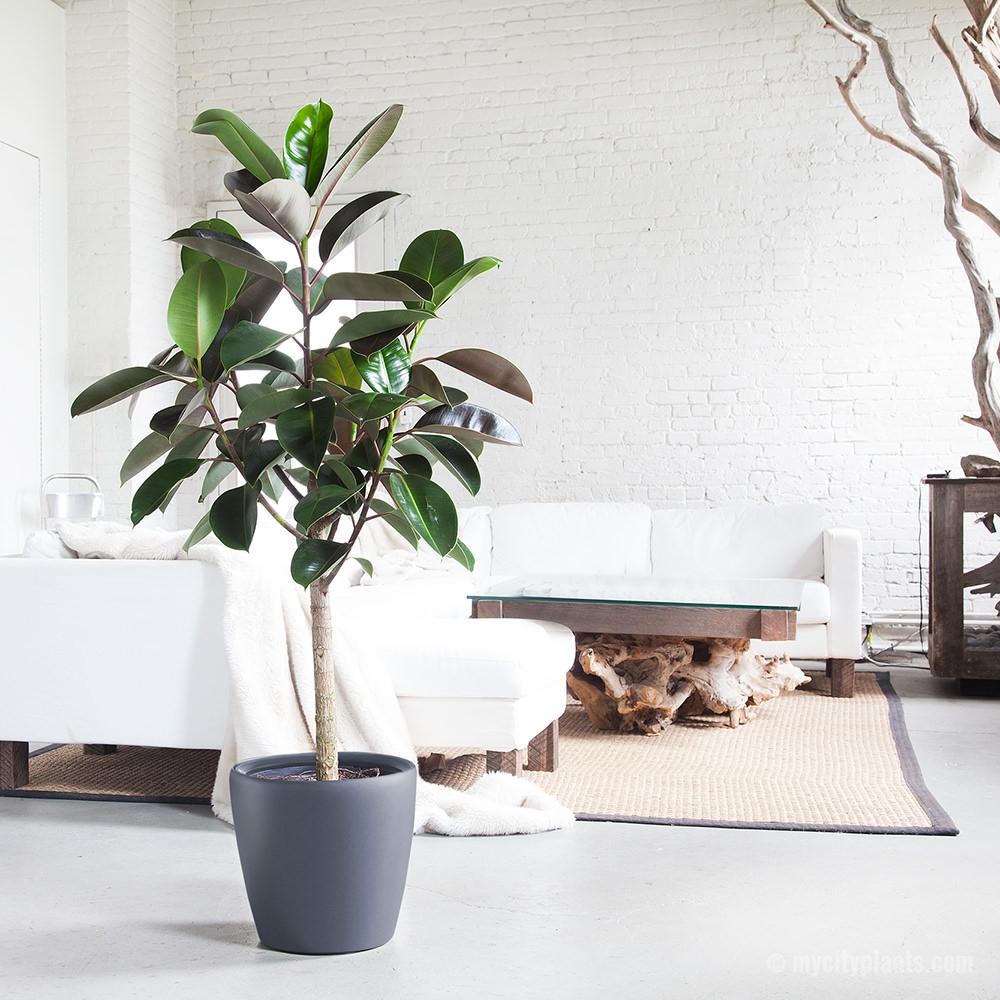Dec 19, 2018
4 Indoor Plants for Air Purification

Air Purification Plants to the Rescue!
Congratulations! You just moved to NYC and are ready to take on the concrete jungle. Your apartment is… a typical NYC apartment. It’s cramped, there’s not much light, and the air feels stale and dry. This is urban dwelling at its finest, and soon you develop a new appreciation for the expression “get some fresh air.” You long for the ecological luxuries that once made your life so fresh and so clean, and each day you feel more suffocated by the dust emitting from your 20-year-old air conditioner and the overachieving radiator that makes your apartment feel like a desert (anyone in NYC knows that having both on at the same time is an all too common occurrence). There must be something that can save you from… but wait! What’s that in the corner?
It’s an air freshener! It’s a humidifier! It’s a scented candle that you found in the bottom of your closet! No! It’s… a plant? They may not look like much, but these humble heroes are here to save the day and purify your low quality air.
HOW THEY DO IT?
Like any good superhero movie, we need to learn the origin story of plants in order to understand their abilities. We all learned in biology about photosynthesis; the process by which plants feed themselves by absorbing sunlight and carbon dioxide (CO2) from the environment and releasing oxygen and moisture back into the air. Impressive right? I mean, who doesn’t want more oxygen and less CO2? But what most people don’t know is that this is just one of their many ecological super powers.
Through the process of “phytoremediation” plants remove volatile organic compounds (VOCs) like formaldehyde (found in many cleaning products and cosmetics) benzene (found in plastics, fabrics and cigarette smoke), ammonia, and allergens from the air. They do this by absorbing VOCs through the pores in their leaves, sending the toxins into the roots, and allowing microbes in the soil to feed on them for energy. Bad. Ass.
Having heard about these air purification capabilities, the government began running studies to understand the full power of these super plants (classic super hero move plot). In an effort to create an ecological life support system (sadly not a weapon), NASA designed a study to measure which plants were most effective at creating oxygen and removing toxins from the air. Although the project never reached completion, the world was left with a group of super plants perfect for protecting our homes.
So the next time you find yourself shopping for plants, or traveling to distant planets, remember these four friendly neighborhood plants that are working hard behind the scenes to keep you and your air safe.

Snake Plant
Technical Name: Sanseveria trifasciata
Light requirements: Low-medium
Water: Once every 3-4 weeks
Fun Fact: Snake plants convert CO2 and release oxygen at night, making them a great choice for your bedroom.

Spider Plant
Technical Name: Chlorophytum comosum
Light requirements: Bright, indirect
Water: Let soil dry out completely between waterings
Fun Fact: About 15 spider plants would purify the air in an average size house

Rubber Tree
Technical Name: Ficus elastica
Light requirements: Bright, indirect
Water: Keep soil moist in summer but water only once or twice a month in winter
Fun Fact: Wild rubber trees can grow up to 100 feet tall!

Boston Fern
Technical Name: Nephrolepis exaltata
Light requirements: Indirect
Water: Soil needs to be cool, humid, and moist at all times, especially in winter.
Fun Fact: This plant is often nicknamed the “sword fern” because of its long, bladelike appearance
More Articles By Farmer Nick
HOLIDAY GIFT GUIDE: 12 GIFTS FOR THE PLANT-OBSESSED PERSON IN YOUR LIFE
